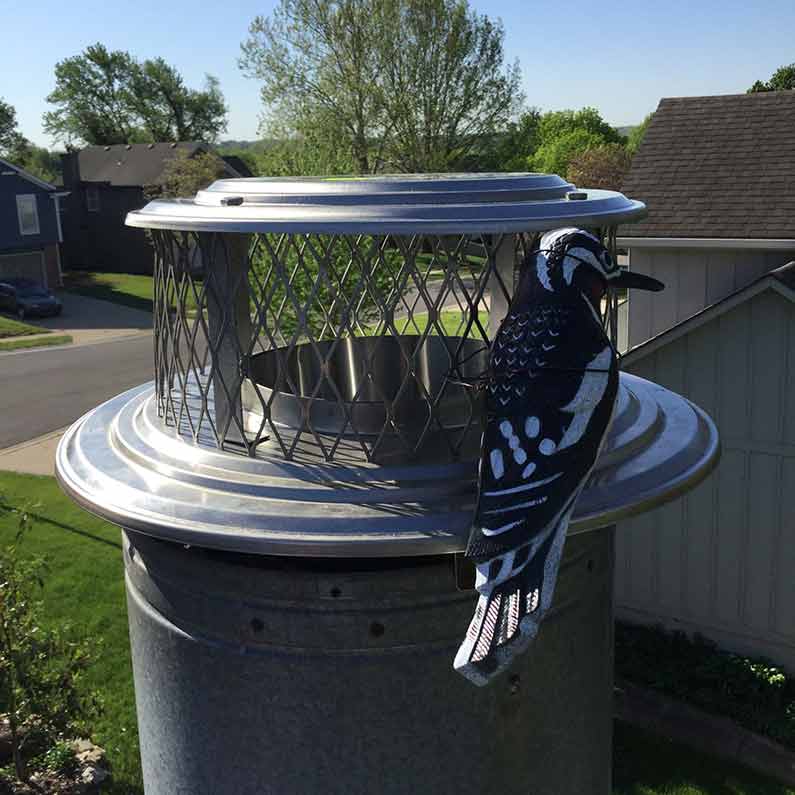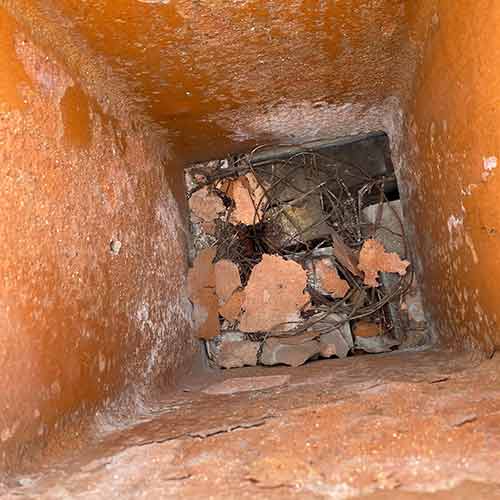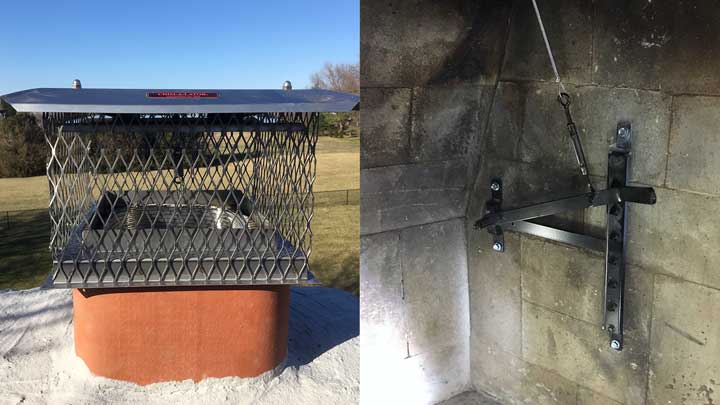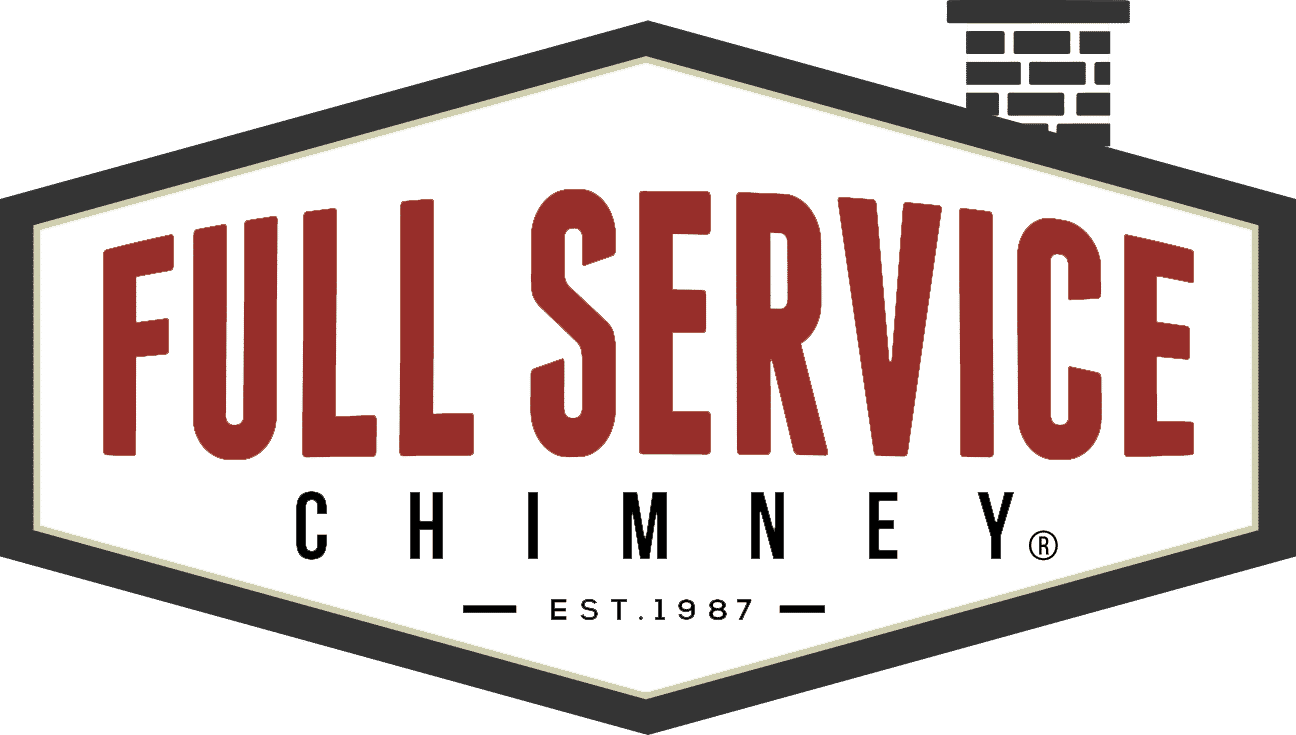Several qualities are necessary to keep a chimney safe. One way to make sure your chimney stays in great shape all year is to install a chimney cap. Good caps can keep out the critters, rain, and debris making your chimney safer.
Watch the video below to learn everything you need to know about caps in less than 3-minutes!
If you’re thinking about a DIY installation, read on my friend… There’s alot to know about how to install a chimney cap.
Table of Contents
Benefits of a Chimney Cap
Installing the Cap on a Chimney
What Is a Chimney Cap?
Chimney caps are protective coverings that go over the top of your chimney. They are usually made of steel or copper mesh and come in a variety of styles to match the outside of your home. On top of the mesh ring, is a cap that helps protect your chimney from rain and downdrafts.
Nobody thinks about their fireplace when it’s blazing hot outside, but everyone should… because when the cold weather starts settling in we look longingly at our fireplaces. Unfortunately that’s often too late in the season to get an inspection or any necessary repairs! For people who don’t have chimney caps… a single year can do alot of damage.
Video Transcript - Are Chimney Caps Necessary?
“Is a chimney cap necessary? What size do I really need? These and other questions are common questions we get at Full Service Chimney when we try and help homeowners with their water and animal entry needs.
You see chimney caps are very necessary. They have two principal functions: First they keep “outside things” out and “inside things” in and they act as “the guard of the gate”, if you will. Protecting your chimney from water, snow, animals and other entry which could do you and your chimney harm! Finally they let “inside things” escape that should… you know what I’m referring to: Smoke, Heat, Creosote, Carbon Monoxide and the other byproducts of combustion.
The chimney cap is smart enough to know these things can exit without other things coming in! Truth be told we would not have about a hundred thousand dollars worth of business every year if chimneys had caps on them right off the bat. They would be preserved and on the verge of lasting a lifetime.
What size chimney cap might you need? Well the first question to that question is: Are we dealing with a masonry chimney or an air-cooled or factory built chimney? With masonry (at least here in the Kansas City Metro) the common sizes are 8 by 8, 8 by 13, 13 by 13, 8 by 17, and 13 by 17. Now they do make one size caps that fit all but they do not work properly, they’re a poor fit.
My suggestion: get someone at the top of your chimney that knows how to measure for chimney caps. Take careful measurements, then select the most expensive cap you can afford. Why do I say that? Most of the caps we sell are replacing older caps but if our customers had, back in the day, purchased a stainless steel chimney cap with a stainless steel spark guard, we wouldn’t even be having this conversation!
Stainless steel caps virtually last forever. That’s why I say the cheapest cap you’ll ever buy will be the one that will not need to be replaced.”
There’s nothing better on a cold night than a warm blaze crackling in a fireplace. But before you put a match to logs, you need to make sure your chimney is in good shape.
We’re going to tell you what you need to know about chimney cap installation. Starting with the BENEFITS of having a cap on your chimney:
Reduce Moisture
One of the best reasons to install chimney caps is to reduce moisture in your home. If you live somewhere where it rains a lot, you’re going to get water in your chimney. As much as possible, you want to prevent this from happening.
Water in your chimney can cause damage to chimney liners, dampers, and even chimney mortar joints. It can also produce mold and mildew in your chimney, which you do not want in your home. It can also raise the humidity in your home, which can make your house less comfortable.

Image shows this customer had a decoy bird on their prefab chimneys cap!
Keep Out Animals
When you’re burning fires in your chimney every night, it’s not going to seem like a great place for animals to live. But during the warm summer months, you could have any number of critters set up shop there. From chimney sweep birds to raccoons, lots of animals may find your chimney a convenient place to set up their home.
This may not sound too bad until you start having baby birds or raccoons fall into your fireplace from the chimney. These critters will also leave behind nesting materials that can catch fire when you go to light a fire next year. Installing a chimney cap can keep pests out of your chimney and save you a bundle in cleaning costs!
Block Downdrafts
We don’t think about it often, but chimneys aren’t a one-way passage for air to move out of our houses. It’s also a passage to allow air in, and if you live somewhere windy, when the wind is blowing in a certain direction, it can cause a downdraft. This is when the wind blows back down your chimney and into your home.
In the winter when you don’t have a fire lit, downdrafts can make your home much chillier. But if you have a fire going, you may wind up with smoke in your house. A chimney cap can get in the way of these downdrafts, keeping your home warm and smoke-free.
Stop Sparks
Have you ever watched sparks and embers from a campfire drift up into the night? The same thing happens in your chimney when you light a fire in your fireplace. And there’s nothing stopping one of those embers from drifting out of your chimney and landing on your roof.
Even one spark could light your roof on fire. If you’ve been keeping an eye on the wildfires in California, you’ll know it doesn’t take much, and it’s a risk you don’t want to take. A chimney cap with a spark arrestor can catch those embers before they make it out onto your roof, reducing your risk of a fire.
Prevent Blocked Flues
If you clean out your gutters every year, you’ll know how much debris can come across your roof. Leaves from nearby trees, twigs, branches, and other materials can build up and cause problems. But what’s stopping all that debris from making its way into your chimney?
Without a chimney cap in place, all manner of debris can build up in your chimney. With the risk of the flue becoming blocked, leading to smoke and carbon monoxide back drafting into the home. Or When you light your first fire of the season, that debris can go up in flames and wind up catching your house on fire. Putting in a chimney cap can keep that debris out and your fireplace safe.

Image shows a blocked flue full of nesting materials, pieces of ceramic flue tiles that fell off the side stacking on top of an existing pile of debris. This is a serious safety problem for residents of the home! A good cap prevents your chimneys from being blocked.
For those who may be considering a DIY installation…
Types of Chimney Caps
Fireplaces and chimneys come in different varieties, so you can imagine caps do too! When you’re choosing a chimney cap, you want to make sure it’s made of the right material. The three most popular options are galvanized metal, stainless steel, and copper. Which type you choose depends on your fireplace situation and your budget, but stainless steel is our sturdy favorite!
If you’re on a budget, you may be tempted to go for a galvanized chimney cap. But these caps won’t work with gas logs and can rust out and damage your chimney and siding over time. Stainless steel and copper caps are more expensive, but they look better and require less maintenance.
Double Check Your Measurements
Not all chimneys are made equal, so neither are chimney caps. You need to make sure you get the right measurements for your chimney so you can buy a cap that fits properly. When you go up the ladder to measure, bring a pad of paper and a pen with you.
If you have one square flue, take measurements of the length and width of the outside of your chimney. If you have a round flue, check the diameter of the inside and the outside of the chimney. If you have multiple flues, check the height of the tallest flue and the width required to cover all of them at once.
Secure It Properly
There are a few options for how to secure your DIY chimney cap onto your chimney. Many caps have support systems that screw into place. Some caps, however, slide into the flue with no additional attachments.
Be sure you look for the caps that screw onto your roof for maximum security. Caps that slide into the flue can slide out just as easily, especially in high winds. They can cause damage to your house or your neighbors’ property, and they can be incredibly dangerous in tornado conditions.
*We do not recommend installing caps yourself. It’s best to hire a trained professional with knowledge of fireplace/chimney mechanics and roof safety.
Make Sure There’s Draft Control
Although replacing chimney caps, in general, helps reduce drafts in your home, some are better at it than others. Some caps may even worsen the draft problem in your house. Before you buy a chimney cap, take a look at your home situation and decide how much protection you need.
Many homeowners encounter problems with drafts in their house, and some companies recommend getting a vacuum chimney cap. These caps can fit over either round pipes or square tiles and may sometimes solve the problem. However in our three decades of experience, more often than not vacuum caps cause more problems than they solve.
If drafts aren’t a huge problem for you, read reviews and make sure the cap you’re selecting isn’t known for making houses draftier.
Consider a Top Sealing Damper Cap
A chimney damper is a system that helps insulate your home from heat loss through your chimney. But many older homes may not have a damper installed. If there is a fireplace damper in place, it may have worn out and fit loosely in the chimney, dropping your energy efficiency.
If you’re concerned you may not have a damper or your damper may be worn out, you can get a chimney cap that has its own internal damper. Buying a sealing damper chimney cap can be a cheaper alternative to installing a full-blown chimney damper. Even if your damper is in good working condition, having an extra damper won’t hurt.

Image shows a Top Sealing Damper Cap on Left and the damper handle on the Right.
Check the Mesh Size
Chimney caps have a ring of mesh that runs around the sides to help keep debris and critters out and embers in. This mesh comes in different sizes, and you need to make sure you find the right size mesh.
You want to aim for mesh that has openings about ¾ of an inch across. Any bigger than that and you risk embers escaping the chimney and setting fires. But ice can form on mesh smaller than that, blocking off airflow and creating issues where smoke and ash can’t escape the chimney the way they’re supposed to when you have a fire lit.
Learn More About Chimney Cap Installation
Chimney caps are an important tool for maintaining your chimney and your home. Before you start on your chimney cap installation, be sure you get the right size and style cap for your home. Double-check your measurements, take a look at the mesh size, and make sure the damper and draft control mechanisms are appropriate for your home.
If you’d like to get your chimney tended to, then reach out to us at Full Service Chimney. We’re the original Kansas City chimney sweep, family-owned and operated for more than three decades.
Call Us at 913-642-6171 today to get your chimney cleaned and inspected before the next holiday season.

Image shows two large masonry chimneys with brand new Mega Flue Caps
Disclaimer
The information on this page is for informative purposes only. We do not advise installing your own chimney cap unless you are a trained professional.
Original post date: Nov 27, 2019. Content revised for improvement. Thank you for reading.

